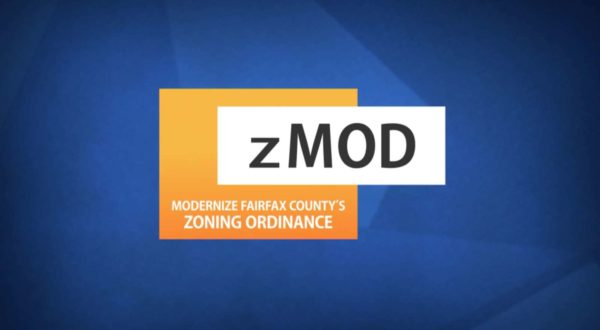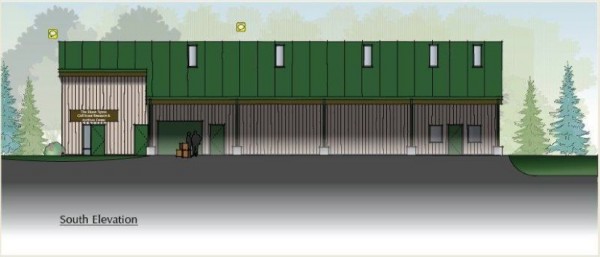Reston Association is planning to refine its official position on Fairfax County’s Zoning Ordinance Modernization Project (zMOD), a major overhaul of the county’s zoning regulations.
The Board of Directors will meet on Jan. 21 at 6 p.m. to formalize a response to the project. The special meeting, which will take place virtually via Zoom, follows concern from the board about the project.
In a Nov. 25 letter, the board highlighted areas of concern to Hunter Mill District Supervisor Walter Alcorn.
Board President Julie Bitzer noted that the timing and approval of the project were of concern, especially since she said the public and other stakeholders did not have sufficient time to review and comment on the 741-page draft of the ordinance.
The letter also cited concerns about dropping some requirements surrounding home-based businesses that “will only create conflicts among neighbors regarding parking, access, and traffic.”
RA plans to submit a more detailed position to the Fairfax County Planning Commission ahead of a public hearing that’s set for Jan. 28.
Information on how to join the Zoom meeting is available online.
Image via handout/Fairfax County Government
The Fairfax County Board of Directors authorized the advertisement of the Zoning Ordinance Modernization (zMOD) project as recommended by the county’s staff during its meeting Tuesday.
This move will allow sufficient time to advertise the project before a planning commission public hearing on Jan. 28, 2021, and a Board of Supervisors public hearing on March 9, 2021, according to the authorized administrative request.
The zMOD project has been included on the Zoning Ordinance Amendment Work Program since 2016. The goals of the project “are to modernize the county’s zoning ordinance, to make the regulations easier for all stakeholders to understand, and to remove inconsistencies, gaps, and ambiguities” that have been incorporated into the current ordinance since its adoption in 1978, according to an executive summary of the project.
During a Hunter Mill district town hall on Monday, Department of Planning and Development planners Carmen Bishop and Casey Judge provided four reasons behind the update of the zoning ordinance:
- Unintuitive format and structure
- Outdated land uses and regulations
- Legal jargon and antiquated language
- Inconvenient on cellphones, tablets and other devices
The current zoning ordinance encompasses more than 1,200 pages. The project proposal includes streamlining the different regulations to make it user friendly, complete with hyperlinks throughout the document as well as tables and graphics that consolidate information.
The language within the current zoning ordinance may also convert to a “plain English effort,” according to Judge.
Though the board authorized the progression of the project, citizens are asking about the language and stipulations in the latest draft of the project.
On Nov. 25, a letter from Reston Association President Julie Bitzer to Hunter Mill district Supervisor Walter Alcorn listed areas of concern “that directly affect the Association and the larger Reston community.”
Among the areas of concern Bitzer listed is the timing of review and approval of the project. Bitzer raised issue with the “inadequate” amount of time to review and comment on the 741-page draft of the new ordinance before the planning commission hearings in January.
During the town hall Monday, similar concerns were heard about the speed in which the project is moving. Bishop and Judge assured the project has been discussed with people from all Fairfax County districts over the last two years.
During the town hall, which marked the 89th meeting about zMOD in the county, it was also explained that the project has been released in installments for over a year while some adjustments were made based on feedback from community engagement.
However, it was reiterated that the county is willing to continue meeting with the public to address concerns or continue to make adjustments based on feedback.
“We want the community engagement. The project has benefitted so much from the input that we have gotten, and so I don’t want to minimize the impact that citizens have already had on this project,” Bishop said.
“But we’re happy to continue the meetings and to continue to fine tune the document.”
Among the other concerns heard during the town hall and expressed in Bitzer’s letter were adjustments to accessory living units (ALU) and home based businesses.
The concerns specifically revolved around potential parking and traffic issues, and how proposed changes to ALUs and home based businesses may coexist with the rules set by homeowner’s associations (HOA) in the area.
Through the zMOD proposal, Judge assured that the project works to recognize “the residential character of these neighborhoods and making sure we don’t have people coming and going all day long.”
The proposed standards for the home based businesses include limiting each to two customers or clients at a time and six per day. The businesses will still require appointments only, each spaced 15 minutes apart. Each home based business will also be required to designate one parking space.
In Bitzer’s letter, she communicated specific concern about the option to remove the requirement that a person with a disability or a person 55 years or older live on the property to obtain a permit for an ALU. Bitzer expressed a belief that this adjustment may have “drastic unintended consequences,” including increased density and conflicts over parking and access.
During the town hall, it was clarified that dwellings with ALUs will be required to provide one additional off-street parking space for an interior unit approved with an administrative permit in addition to the off-street spaces already designated for the dwelling.
Another proposal stipulates that ALUs must meet health department approval and applicable regulations for building, safety, health and sanitation.
It was also clarified that each HOA will retain its covenants that will take precedent over the county’s regulations.
The final area Bitzer addressed in her letter was a point of support on behalf of the Reston Association for the proposed change requiring “the disclosure and showing of all easements on properties, regardless of easement width, on rezoning and entitlement plans being submitted for review.”
Image courtesy Fairfax County

Concerns Voiced About Zoning Modernization Project — Reston Association’s Board of Directors have written a letter to the Hunter Mill District Supervisor voicing concerns about the county’s ongoing zoning ordinance modernization project. Concerns highlighted include the need for more public review and issues related to accessory living units and home-based businesses. [RA]
FCPD Mourns Loss of K9 — “We are heartbroken to share the news of the recent passing of one of our retired patrol canines, K9 Blitz. K9 Blitz served the Fairfax County community from 2008 to 2012, when his handler left the Canine Section due to a career promotion. K9 Blitz was a Belgian Malinois who was also specially trained to assist our SWAT team on operations.” [Fairfax County Police Department]
Reminder: Taxes Due Dec. 7 — If real estate taxes aren’t already built in your mortgage, the second installment of this year’s real estate tax is due by Dec. 7. Payments can be made online. [Fairfax County Government]
FCPS Establishes Student Equity Ambassador Leaders Program — “Fairfax County Public Schools (FCPS) has established a new leadership program–Student Equity Ambassador Leaders (SEALS)–to amplify student voices and provide an increased understanding of diversity, equity, and inclusion through leadership development, projects, and relevant experiences of high school students.” [FCPS]
Photo via vantagehill/Flickr
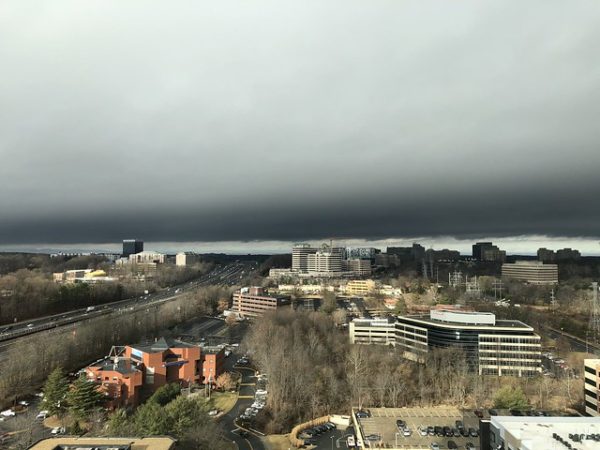
Since early 2014, a little over 10,000 residential units were approved in Reston. Just under 15 percent are considered affordable.
As the more residential development begins in Reston’s Transit Station Areas (TSAs) and Metro’s Silver Line ushers in more activity, nonprofit leaders and area community organizers wonder if Reston will hold true to Bob Simon’s vision for housing affordability.
“Reston was originally a very inclusive community. We have to ask ourselves, are we keeping that promise? Yes, we are a changing and growing community. But how can we achieve that balance between old and new?” said Kerrie Wilson, CEO of Cornerstones, a nonprofit organization that helps neighbors overcome economic hardship.
Achieving greater housing diversity is an aim of Reston’s comprehensive plan, which notes that most new affordable housing should be in multi-family units.
“Future development should ensure that a diversity of housing is available in the TSAs,” the plan states. “The residential component of mixed-use development should meet the needs of a variety of households such as families and seniors.”
But as Reston grows, will inclusive affordable housing keep up?
Tackling affordable housing is a regional problem and Hunter Mill District Supervisor Walter Alcorn (D) and other elected representatives have stated they expect to reexamine the county’s policies and procedures soon.
The county’s rejection of a proposal to redevelop Reston Town Center North — which would have delivered affordable housing units and redeveloped a homeless shelter and Reston Regional Library — was a significant setback for some local housing advocates. The need for affordable housing — particularly workforce units — is expected to grow as more workers take up jobs in new mixed-use centers.
From a policy perspective, the county has aggressively pursuing affordable housing in every development that requires it, according to county officials. A variety of techniques — including land-use policies, federal funds, and nonprofit and for-profit housing partnerships — are used to preserve housing units and create new ones.
Last year, a panel created by the county to study affordable housing outlined several strategies and recommendations to the county’s board for considerations. The 37-page report – which was incorporated into the county’s housing strategic plan — is part of an ongoing conversation on how to tackle housing affordability.
“Reston has traditionally been a welcoming and inclusive community and a leader in affordable housing,” said Tom Fleetwood, director of the county’s Department of Housing and Community Development. “Still, Reston, like the rest of Fairfax County, is a challenging housing market for low-to-moderate-income families because this is a very desirable place to live.”
Per goals outlined in planning documents, the county aims to reach a net 15,000 new affordable units at up to 60 percent of the average median income within the next 15 years.
“We have certainly made significant steps forward. But a significant amount of work remains,” Fleetwood said.
Since early 2014 through June 2019, the county approved 10,045 residential units, including a 2,010-unit proposal by Boston Properties and a 668-unit proposal by Comstock for Reston Station. Developers are set to pitch $18.1 million into the county’s housing trust fund once the first non-residential use permit is issued, according to county data released to Reston Now last year.
Private developers have delivered 453 workforce dwelling units for rent and 188 affordable dwelling units for rent in Herndon and Reston, according to county data.
“We are trying to work through every application to get affordable housing and we have gotten some affordable housing through every development,” said Bill Mayland, branch chief of the county’s zoning evaluation division.
He noted that it can be challenging to incorporate inclusive affordable housing units — whether workforce units or affordable dwelling units — in high-rise buildings, especially if condominium fees are charged in addition to rent.
Creativity is a common word used by experts as a solution for affordability challenges. Working outside of county land use and zoning provisions, some communities across the country have embraced more unconventional means to secure affordable units for rent and purchase in existing and new development.
At Cornerstones, the staff has successfully pursued a scattered-site model by working with developers to make specific units affordable. Recently, the nonprofit doubled its Reston housing stock by adding 48 units from the Apartments at North Point.
But in the town center and other rapidly growing areas, developers are not always open to experimentation beyond the county’s existing requirements. The hope is that the oncoming Silver Line train at Reston Town Center — which could begin operation by early 2021 — will boost developer’s confidence in the residential market and add more pressure to incorporate more affordable units as more people and jobs come to the area.
Others say that the county should consider dedicated one penny of the real estate tax to affordable housing projects.
Fleetwood says that he expects renewed discussions on housing affordability – including reaching more income levels – to continue in the coming weeks.
“My assessment is that the county’s policies have been productive and helpful. I think they are going to continue to evolve so that we have a policy that works over the long-term and for our developers. It is a continuing and evolving partnership.”
Editor’s note: Interviews were conducted in late 2019
Photo by Bako Glonto/Flickr
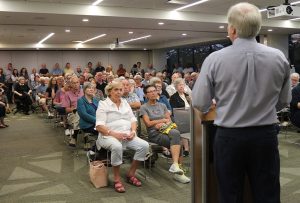
County officials will conduct small working sessions in the coming weeks with representatives from the Coalition for a Planned Reston, a grassroots umbrella organization, and Reston Association.
The meetings are intended to encourage dialogue between county staff and other organizations as the county mulls a controversial plan to increase Reston’s population density in Reston’s Planned Residential Community district from 13 to 16 people per acre.
The working sessions will cover planned future growth and its impact on transportation, schools and public facilities, parks, recreation and open space and overall planning.
CPR, which includes residents from the Reston Citizens Association, Reclaim Reston and Reston 20/20, hopes talks will allow the organization to “further clarify the modifications to the Reston Master Plan proposed by CPR and [RA]” said Lynne Mulston, a spokesperson for CPR.
Ultimately, CPR hopes changes to the Master Plan will eliminate the need or perceived need to boost the density cap.
In March, many suggestions pitched by both organizations were rebuffed by county staff, who argued that proposed changes to Reston’s PRC simply implemented the Master Plan, which was formed with community and stakeholder input.
Most recently, CPR and RA met with Hunter Mill District Supervisor Cathy Hudgins and county staff to resume discussions on May 14.
The working sessions’ statement of purpose, proposed by Fred Selden, Fairfax County Director of Planning and Zoning is as follows:
The purpose of these small group meetings is to continue the dialogue between Fairfax County staff and representatives of both Reston Association (RA) and Coalition for a Planned Reston (CPR) regarding the proposed changes to the PRC zoning district. Each small group will consist of representatives from County staff, RA, CPR and other Reston stakeholders. They will discuss future growth and its implications or impact on public facilities and infrastructure that serves Reston.
The schedule of meetings has not been finalized. CPR and RA are reaching out to subject matter experts to participate in the sessions.
File photo
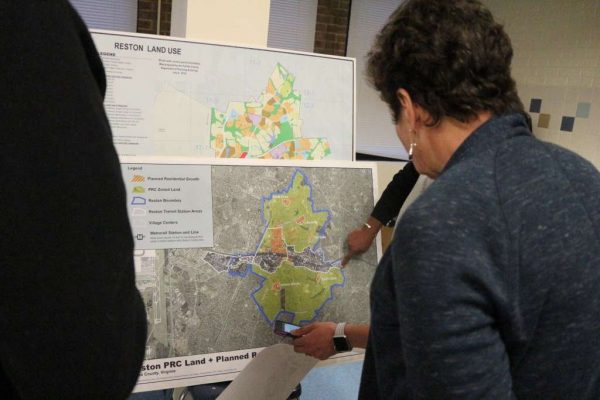
County staff rejected any changes that affect land use, density or intensity recommendations in Reston Master Plan until after 2019, responding to requests by Reston Association’s Board of Directors and the Coalition for a Planned Reston (CPR) to the planning document.
The county’s written response comes as officials prepare to push forward plans to increase Reston’s population density from 13 persons per acre to 16 in Reston’s Planned Residential Community.
Plans were staunchly opposed by residents in community meetings, while supporters contend the increase is necessary to implement Reston’s Master Plan, which posits major growth potential for the planned community.
Fred Selden, the Fairfax County Department of Planning and Zoning director, wrote that the county is only open to considering clarifications, correcting oversights or editorial tweaks — emphasizing that the plan was the result of a six-year study, recommendations from a 50-member task force, and a significant public engagement period.
“Recognizing the time, energy and community commitment that go into our multi-year land use studies, it has long been the county’s practice not to amend these new plans within the first five years of their adoption,” Selden wrote.
In a point-by-point outline responding to RA’s November 2017 letter and CPR’s February letter, Selden said the county is monitoring plan implementation, including the pace of development and public facilities, schools, parks and road.
The growth of development and resulting infrastructure needs and strains has been cited as a central concern for CPR and RA’s board. County staff reiterated their willingness to work with community groups and stakeholders to address concerns.
Noting that the plan already contains controls to manage development, staff said they will work to develop a phasing plan that will tie future development with specific infrastructure and public facility needs.
The letter also noted the county’s willingness to amend a portion of the plan that allows 50 or more dwelling units per acre, resulting in “unlimited development.” The county is also willing to more explicitly state that redevelopment is recommended in non-residential, mixed-use areas in village centers, not stable residential neighborhoods.
Staff also committed to monitoring the implementation of the Reston Plan and providing a progress report for Reston similar to one performed for Tyson. Staff noted they were open to seeing an overall maximum population, but did not indicate if they agreed with CPR’s recommendation of 120,000.
Other recommendations were flatly rejected, including CPR’s request to require 20 percent of all future dwelling units to be affordable, other requests to reduce the density of dwelling units, and a request to delete language that allows redevelopment of St. Johns Woods.
An attempt to remove the road connection between American Dream Way and Isaac Newton Square — a mapped road across Hidden Creek County Club — was also not favored by staff. The option for the road is necessary to reduce congestion at the intersection of Sunset Hills Road and Wiehle Avenue, county staff said.
The complete letter is below:
Department of Planning and Zoning Response to CPR, RA, Hudgins by Fatimah Waseem on Scribd

Reston Community Leader, Civil Rights Advocate Remembered — “The letters and cards that Rev. Frederick Lowry’s family received after his death kept circling back to the same sentiments: how kind he was, how much he cared, his sense of humor,” writes Angela Woolsey. Lowry died due to complications from Alzheimer’s disease on Dec. 25. He was well-known for his 14-year tenure as director of the Community Ministry of Fairfax. [Fairfax County Times]
Ten Things You Should Know about Olympic Speedskater Maame Biney — The Reston native is headed to the Olympics. The 17-year-old speedskater is the first black woman to land on a spot on the U.S. Olympic speedskating team. [NBC4]
County Hosts Community Meeting on Plans to Convert Empty Office Buildings into Other Uses — The county is holding a meeting today at 6 p.m. in the Fairfax County Government Center (12000 Government Center Parkway) to discuss a comprehensive plan amendment that would allow empty office buildings to be converted for other uses. An attempt to carve a special exemption for Reston when the first phase of the amendment was introduced failed last year. [Fairfax County Government]
Build a Birdhouse Tomorrow at Walker Nature Center — Children between the ages of 7 and 12 can get their hands busy tomorrow from 11 a.m. to noon at the center. Attendees will practice basic woodworking skills by constructing a birdhouse. Tickets are $7 for Reston members and $9 for all others. [Reston Association]
Photo by Fatimah Waseem
 The Reston Planning and Zoning Committee is seeking members to serve on the advisory body, which is intended to ensure development in Reston is in concert with its designation as a planned community.
The Reston Planning and Zoning Committee is seeking members to serve on the advisory body, which is intended to ensure development in Reston is in concert with its designation as a planned community.
In order to serve on the committee, members must be residents of Reston and over 18 years old. The 15-member body has five regular positions and three associate positions that are expiring this year
Regular members have three year terms while associate members serve one-year terms that begin in January. Meetings are held the third Monday of each month at 7:30 p.m. in the Community Room of the North County Government Center (1801 Cameron Glen Drive). The position is a volunteer-based only.
Applications are being accepted online. The deadline is Dec. 16.
The committee does not have any statutory authority; however, it is seen by local government authorities as a source of advise on land use matters. The future scope of the committee is likely to shift from initial residential development to considerations of redevelopment activities, especially the development of commercial and industrial space, according to the committee’s website
Some residents of nearby Oakton who live near the Girl Scouts of the National Capital Region’s Camp Crowell are gearing up for the latest in an ongoing fight with the county.
For several months, the residents have been protesting the Girl Scouts’ plans to build a 6,000-square-foot storage facility on the wooded site of the camp, which thousands of Northern Virginia Girl Scouts use as a camp and retreat center.
The case goes before the Fairfax County Board of Zoning Appeals on Nov. 20.
“The Board of Zoning Appeals will be deciding if the ‘Resource Center’ will be allowed to be built on the campground,” the group Stop Industrial Oakton writes in its latest blog post. “It has all the characteristics of a commercial warehousing operation and has been located in an industrial/commercial district for over 25 years.”
The scouts are seeking a special-exception amendment from Fairfax County. Since the 1980s, the council has been leasing a Merrifield storage facility at a cost of about $50,000 annually. But that lease is not being renewed as that location is about to be redeveloped as part of the big Merrifield transformation.
Girl Scout leaders say they examined other comparable rental sites, but decided it would be more cost-effective to spend $600,000 and build a permanent resource center in Oakton. The facility will mainly house camping equipment and other supplies.
Camp Crowell is located near Stuart Mill, Justin Knoll and Vale roads. The site also is close to Difficult Run Stream Valley Park and Gabrielson Gardens Park, both part of the Fairfax County Park Authority.
The 67.7-acre camp has some development, including a paved road, two lodges, picnic and cooking shelters, latrines, parking facilities and campsites with shelters.
The building would be located at the site’s northern end, near the Justin Knoll Road entrance. There are about 10 homes on Justin Knoll, each on two-acre lots, The Washington Post reports.
The scouts say they have already made concessions to the neighbors, including painting the structure dark brown to blend in with the woods, having a reduced number of parking spots and limiting access from scout leaders (who would pick up equipment elsewhere).
Still, neighbors have a long list of concerns. Among them:
- Green space will be lost: a large area cleared; 4000 sq. ft. of paved parking; 6000 sq. ft. and 27 ft. high steel construction; and cannot be replaced by planting a screen.
- Justin Knoll is a residential cul-de-sac, a small road without sidewalks and cannot withstand the ebb and flow of commercial traffic which is more suited to a minor arterial road. The residential character will be lost.
- The commercial nature of this activity will detract from the neighborhood and negatively impact the tax base.
- Protecting the residential integrity of this neighborhood is important for all the residential neighborhoods in Oakton and countywide.
- There are warehouse properties available for sale for comparable money proposed for this project in the same locations that would serve the Council’s purposes.
- It is not reasonable to burden a community simply because it makes financial and logistical sense for someone else.
Oakton resident Trish Strat is a longtime Girl Scout member and leader who is now working with Stop Industrial Oakton to keep Camp Crowell a camp and not a warehouse district.
“My fight is for the girls,” she said. “It is wrong to put such a structure at their camp. When you drive through the windy roads of Oakton and you get to the camp, you will see this massive building that does not need to be there. We need to save the forest so the girls can feel they have arrived someplace special and not at Safeway.”
(Rendering of proposed Girl Scouts storage facility courtesy of Stop Industrialized Oakton)


